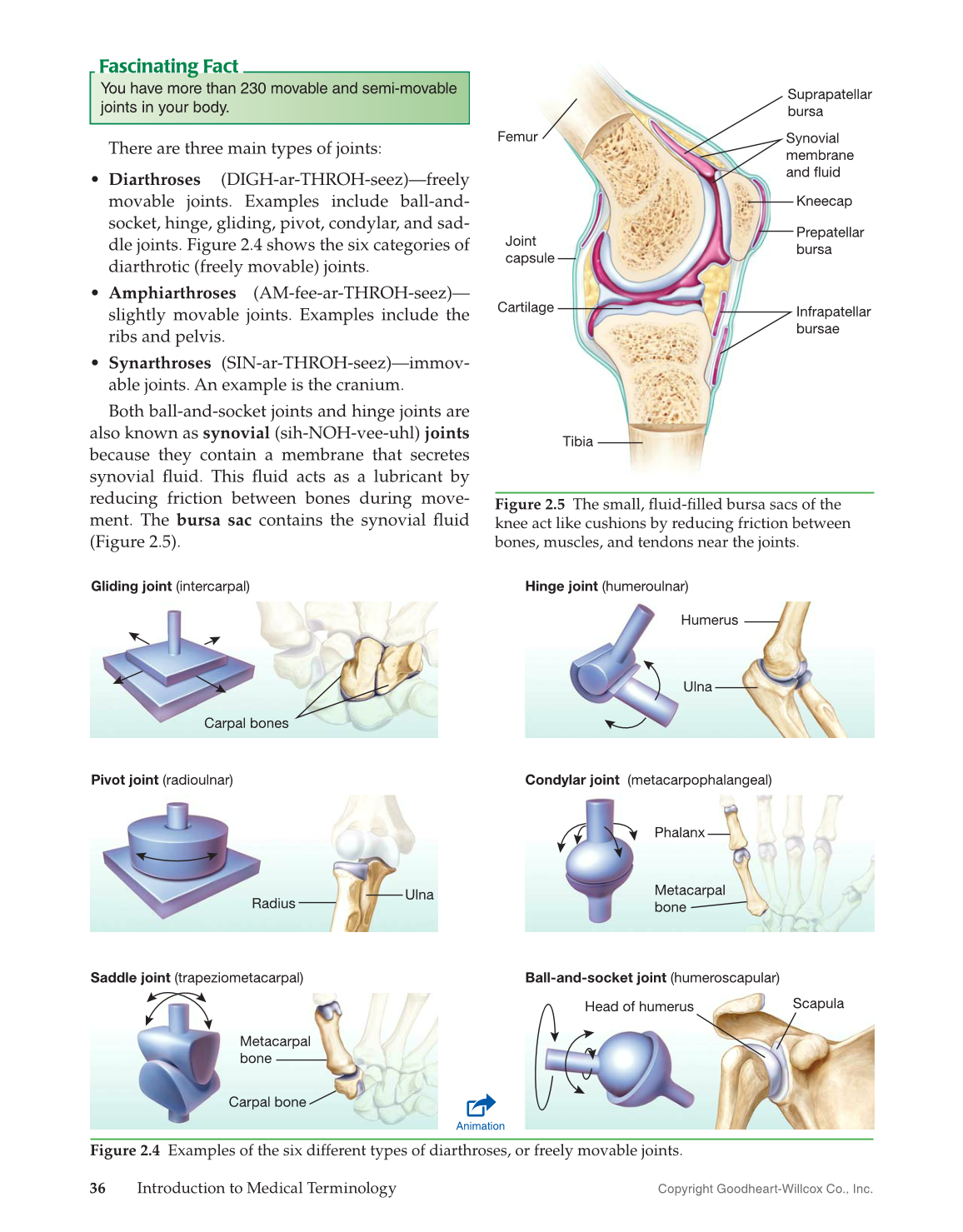36 Introduction to Medical Terminology
Copyright Goodheart-Willcox Co., Inc.
There are three main types of joints:
• Diarthroses (DIGH-ar-THROH-seez)—freely
movable joints. Examples include ball-and-
socket, hinge, gliding, pivot, condylar, and sad-
dle joints. Figure 2.4 shows the six categories of
diarthrotic (freely movable) joints.
• Amphiarthroses (AM-fee-ar-THROH-seez)—
slightly movable joints. Examples include the
ribs and pelvis.
• Synarthroses (SIN-ar-THROH-seez)—immov-
able joints. An example is the cranium.
Both ball-and-socket joints and hinge joints are
also known as synovial (sih-NOH-vee-uhl) joints
because they contain a membrane that secretes
synovial fl uid. This fl uid acts as a lubricant by
reducing friction between bones during move-
ment. The bursa sac contains the synovial fl uid
(Figure 2.5).
You have more than 230 movable and semi-movable
joints in your body.
Fascinating Fact
Figure 2.4 Examples of the six different types of diarthroses, or freely movable joints.
Suprapatellar
bursa
Femur
Joint
capsule
Cartilage
Tibia
Synovial
membrane
and fluid
Kneecap
Prepatellar
bursa
Infrapatellar
bursae
Figure 2.5 The small, fl uid-fi lled bursa sacs of the
knee act like cushions by reducing friction between
bones, muscles, and tendons near the joints.
Ball-and-socket joint (humeroscapular)
Head of humerus
Scapula
Hinge joint (humeroulnar)
Humerus
Ulna
Pivot joint (radioulnar)
Radius
Ulna
Gliding joint (intercarpal)
Carpal bones
Saddle joint (trapeziometacarpal)
Carpal bone
Metacarpal
bone
Condylar joint (metacarpophalangeal)
Metacarpal
bone
Phalanx
Animation
